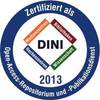Preview |
PDF, English
Download (102MB) | Terms of use |
Abstract
Synthetic cells provide a powerful platform to explore the origins and principles of life, and hold promise for transformative applications in biotechnology. Among life’s features, evolvability is the central landmark to be engineered for life to emerge from non-living matter. However, there is currently no general strategy for the programmable segregation of genetic material, and structural components like cytoskeletons are rarely expressed in situ, limiting their evolvability. In the first part, I develop a DNA-based module for programmable spatial segregation of information. Using DNA motifs that undergo liquid-liquid phase separation, DNA droplets can be induced to split via enzymatic or light triggers. When confined in synthetic compartments, their segregation kinetics and spatial behavior become sequence- and environment-dependent. A lattice-based theoretical model reproduces key features of the dynamics and helps explain how confinement influences segregation. In the second part, I demonstrate the in situ expression of RNA origami cytoskeletons inside lipid vesicles. These co-transcriptionally folded structures self-assemble into nanotubes that bind and deform membranes. Sequence mutations modulate stiffness and morphology of the nanotubes, as shown experimentally and supported by coarse-grained molecular dynamics simulations that link sequence-level changes to mechanical responses. By implementing nucleic acid nanostructures which give rise to microscale phenotypes, these systems create minimal genotype–phenotype couplings. This enables genetically encoded behaviors that are more readily selectable and thus more compatible with evolution.
| Document type: | Dissertation |
|---|---|
| Supervisor: | Göpfrich, Prof. Dr. Kerstin |
| Place of Publication: | Heidelberg |
| Date of thesis defense: | 14 October 2025 |
| Date Deposited: | 27 Oct 2025 14:31 |
| Date: | 2025 |
| Faculties / Institutes: | Fakultät für Ingenieurwissenschaften > Dekanat der Fakultät für Ingenieurwissenschaften |
| DDC-classification: | 570 Life sciences 620 Engineering and allied operations 660 Chemical engineering |
| Controlled Keywords: | Synthetische Biologie, DNS-Origami, RNS, Lipidmembran |









